

 .....
.....

Bill Winkis -KC4PE
Cataula, Georgia
Scroll the entire Amateur Radio Page for all details or Click on a heading below for topics
Operating Console ....................................... Station Wiring .......................... Audio Equipment
Near Field Monitors ................................... Antenna Systems .......................................... Hazer
Antenna Transfer Switches ..............................Grounding ...........................Power Conditioning
Kenwood 590/870 Twins............................. Doped Ground Rod ..................Virtual Digital Audio
Wayne Overbeck VU Meter ....................... DX Engineering NCC-2..................... RF Space SDR-IQ
TriEx LM-70 Tower Installation ............. Tower Grounding System ......... Hanging Vertical Coax
Operating Console - Panoramic view

Operating Desk
| ....Radio's.. | ..Antenna.. | ..Height.. |
| Anan-8000DLE SDR | 20 Meter-5 ele | ..142'/43 Meters |
| Kenwood TS - 870 Transmitter | Multi Band Log Periodic yagi - 10 ele | 104'/32 Meters |
| Kenwood Ts - 590 RTeceiver | 2 Element 40 meter beam - | 78'/24 Meters |
| RF Space SDR-IQ | HyTower/Vertical-Multi Band, 70-80" radials | 57'/17 Meters |
| AOR-7030 Receiver | 40 Meter, two full wave loop fed in phase | 133'/40 Meters |
| 80 meters, two full wave loops fed in phase | 110'/37 Meters | |
| G5RV Spotting Ant/Phase/Noise cancelling | 80'/25 Meters | |
| 4 Element "Inverted "V" Beam..40 meters | 156'/48 Meters..Rope | |
| 3 Element"Inverted "V" Beam ..80 meters .. | 156'/48 Mters..Rope |
Right side of operating console......

Center of operating console
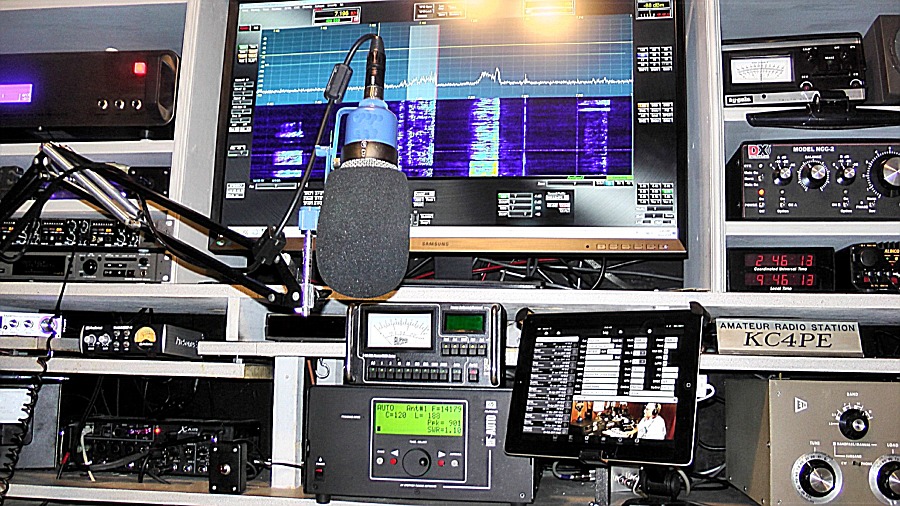
Left side of operation console

Station Wiring & Interconnect Print

Audio Set Up For ESSB SSB/AM Audio
CuBase 7 Software Screen/Plugins

Screen Shot of Audio software .. via United Audio and various Black Box VST plugins

Microphones
Neumann U-47 (tube)
Neumann U-87 (condenser)
Electrovoice RE-320 (dyanamic)
Beyer M260 (ribbon)
Groove Tube GT55 (FET condenser


**

Antenna set up...Vertical, with 6000 feet 80" radials....10 ele Log Periodic@ 104'...5 on 20 @ 142'....4 Band - 2 element on 40, Two full wave length loops, fed in phase one 40 and one on 80 meters. Two 102" wips on a DX Engineering NCC2, 40 Meter NVIS, 8 feet high with 8 direct buried radials, 68 foot Test Tower, with trolley..
HyGain 18HT vertical 2 -160 meters, with 6000 feet of buried radials
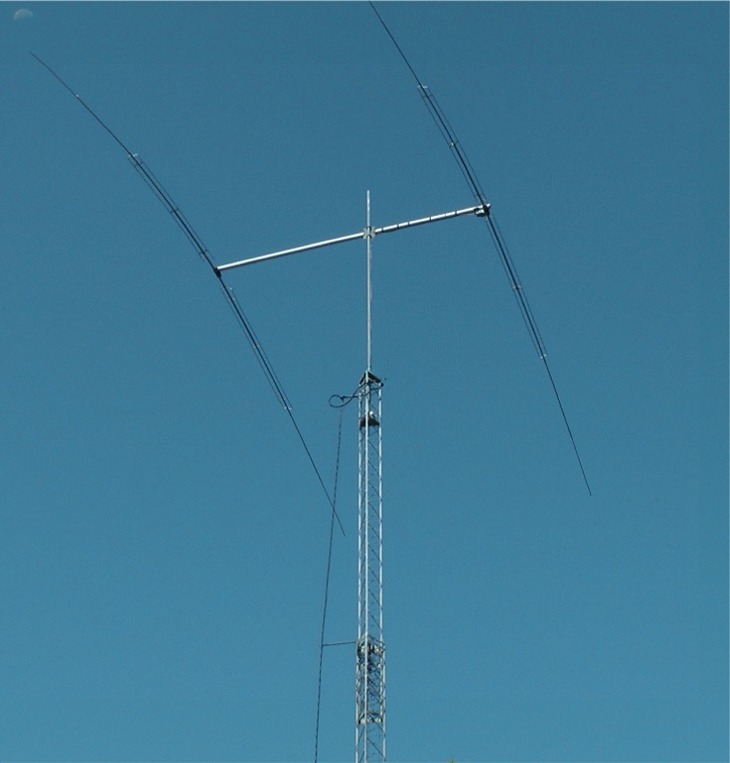
40 meter two element beam
Four band - 4 Element Quad on a Glen Martin Hazer Trolley @ 70 feet ..Separate feed lines/co-ax transformers
Close up of Glen Martin Hazer Trolley System
Miss Donna ... Quad Builder & encouraging Wife
Moving the Quad from the Hazer Test Tower to the LM70 Crankup Tower had to be done manually, due
to recent heavy rains........ 11' 2x4's with saddles and a hold on dowel were constructed.... Thanksgiving
Week when all the kids were in for "Turkey Day", I made them earn their dinner; we moved the antenna...
Worked perfect...Mast flipped up and slid right into the thrust bearing and rotor....
Ten Element Log Periodic @ 105 feet ...Tennadyne
Items Of Interest
PTT for each radio and transfer relay switches from "Top Ten Devices Inc" relays model number ABSS


Grounding & AC Power protection

Polyphaser Copper Pass Through Panel

Kenwood TS-870 (Transmitter) & The TS-590 (Receiver)
.
Like the rest of the Ham Fraternity I eagerly awaiting the entrance of the Yaesu 5000 and Kenwood TS-990 Transceivers. In the meantime I purchase three TS-590's attempting to solve the ALC overshoot problem for once and all. Also I looked at alternatives to improve the TX sound on SSB to the level of the Kenwood 950 series and the Kenwood TS-870. Concentrating on the 590 transmitter, I totally ignored the receiver performance. I wanted the fix on both issues to be of a level where the average Ham could make the mods, but not have to pull boards and do a real re-design. Finally got to the point where it would not be feasible from the $$$ standpoint and the expertise need to accomplish.
Note:, As of 12/15/2013 all TS-590 production has the, ALC over shoot fix installed!!
The idea of why not: use the 870 as a transmitter and the 590 as the receiver surfaced What on earth would be the reasoning for such a move...??
- TS-870 one of the most linear, professional sounding SSB transceivers on the market.
- No ALC Over Shoot on the 870.
- No TX, AGC problems 870
-TS-590 rated way up on Rob Sherwood' leader Board of receivers.
-Very Good Noise Blanker, when set up with patience. 590
-Very Good DSP Noise reduction, when set up properly. 590
- One of the best if not the best, Audio Processors. Properly set up, the VU boys constantly give it 2 "SW" units plus, and high talk power. 870
-Superb Roofing Filters array, 590.
Thus 590 number four was purchased and the receive performance was "Top Cabin", it required a little tweaking and balance between panel controls, but the end result was "Outstanding", The Noise Blanker was very good, but required study and careful tuning, DSP Noise Reduction was very good even to the level of the JPS 500 series commercial Noise reduction units. It was apparent that the 590 is a winner.
But now, how to get the 870 to act as a solo transmitter and the 590 to act as a solo receiver was tackled.
An interface box was designed to accomplish such.
A. - When you hit the 870 PTT a signal was sent to the interface that open relays that took the 590 RF line out of circuit and sent it to ground. Also a protection device was inserted and a rather un-orthodox keying sequence was added.
B. - An audio loop was installed in the interface so one can add a DSP noise reduction system to aid the 590's system.
C. - The RS-232 Null cable set up the 590 - 870 tracking sequence.
Bottom line it works and works perfect. So what you have is one of Kenwood's
best Audio Transmitters on TX, and Kenwood super 590 receiver on RX. And they
switch back and forth, mute, track like oil on glass.
Now the next step, installed an IF signal pickup in the 590 and fired it into an RFspace SDRIQ receiver. Then set up the SDRIQ-RADIO USB software. So now we have probably the best Pan displays offered. And the features of this software are 100 fold. The software can control the 590 and the 590 controls the 870.
So now we have an 870/590/interface/aux DSP system … how does it play?
The 870 still is Kenwood with its signature sound.
The 590 is terrific if you study it and have patience, if you learn how to interface the RF gain into all enhancing options.
And remember in it's naked state its rated way up on the Rob Sherwood's Leader Board.
Now came the test I did not
want to do … My 990 against the twins….
First of all let me say...the 990 is "IT" there is no other, some
come close but, "No Cigar" And if you have $8K...buy it…. You
will not look back.
But the 870 on SSB sounded better, the PA's did their job, No problems.
The receiver the 590 does not have the flexibility, control nor the ability, to tailor an incoming signal like the 990. But. But, it's comes Very-Very close….and with an Aux DSP unit, like the JPS NIR12, it does tricks and actually pulled out VU's when the 990 had them but just not clarify etc….
Close in QRM was handled by both units with good results, the 990 edged out the 590 with its multi-choice Roofing Filters, but the JPS came to the 590's rescue.
All in all a superb performance by both.
But why do all this ….
Here is why…590/$1400.00 …Used 870/$1200.00..interface/ $75.00….SDRIQ/$400.00 ….Used Aux DSP unit..??? …..Total … $3075.00
Need I say more…??? That's a heck of a lot of Bang for the buck!!
And don't forget, you still have two solo transceivers working as twins, but if one were to need service, you would use the other unit as a backup and stay on the air.!!
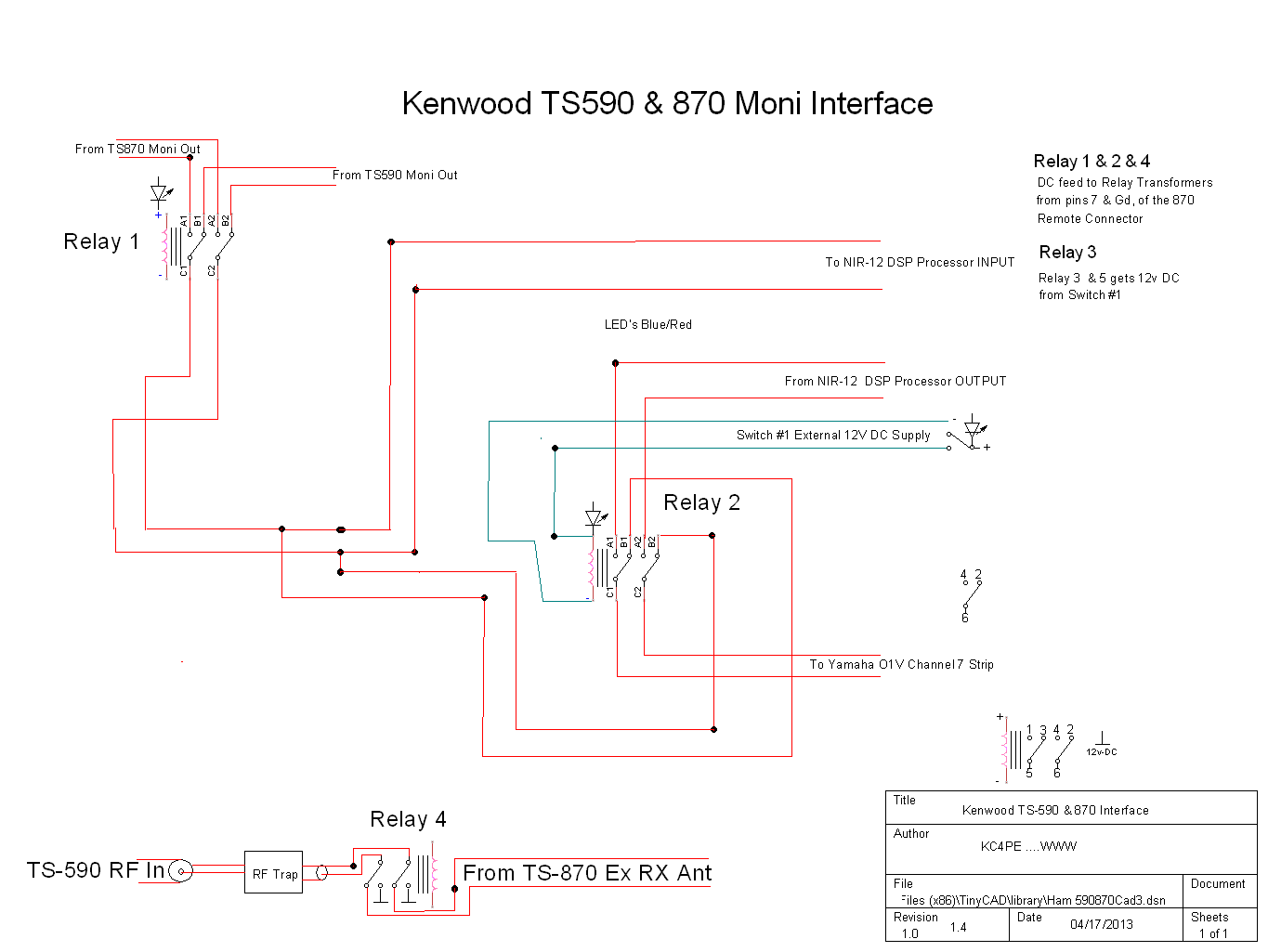

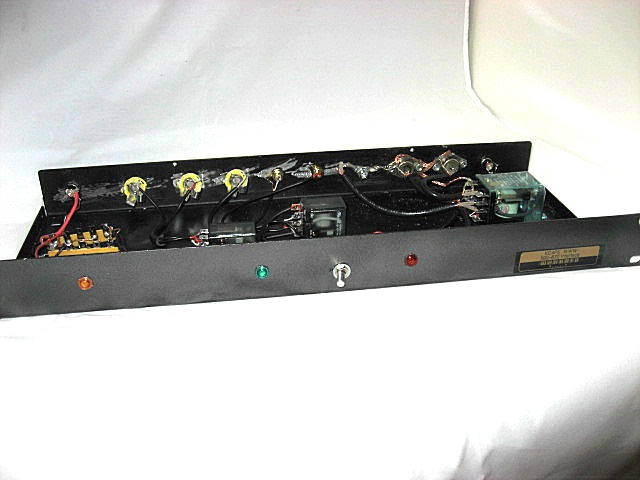

The Shack's Power Conditioning System

The PolyPhaser PLDO is a Power line extension protector with multi-strike capability, and a circuit breaker for added protection....The IS-B50 is a dc blocked 50 Ohm bulkhead mounted protector connected directly to the copper pass through plate.. The Tripplite Isolation/Conditioner transformers are the IS1000 ... the Power Regulators and Conditioners are the ....LC-1800
Solid Copper feed through plates with total PolyPhaser protection,"Delta Loop Four Rod Grounding System" plus another 20, 8 foot ground rods!!

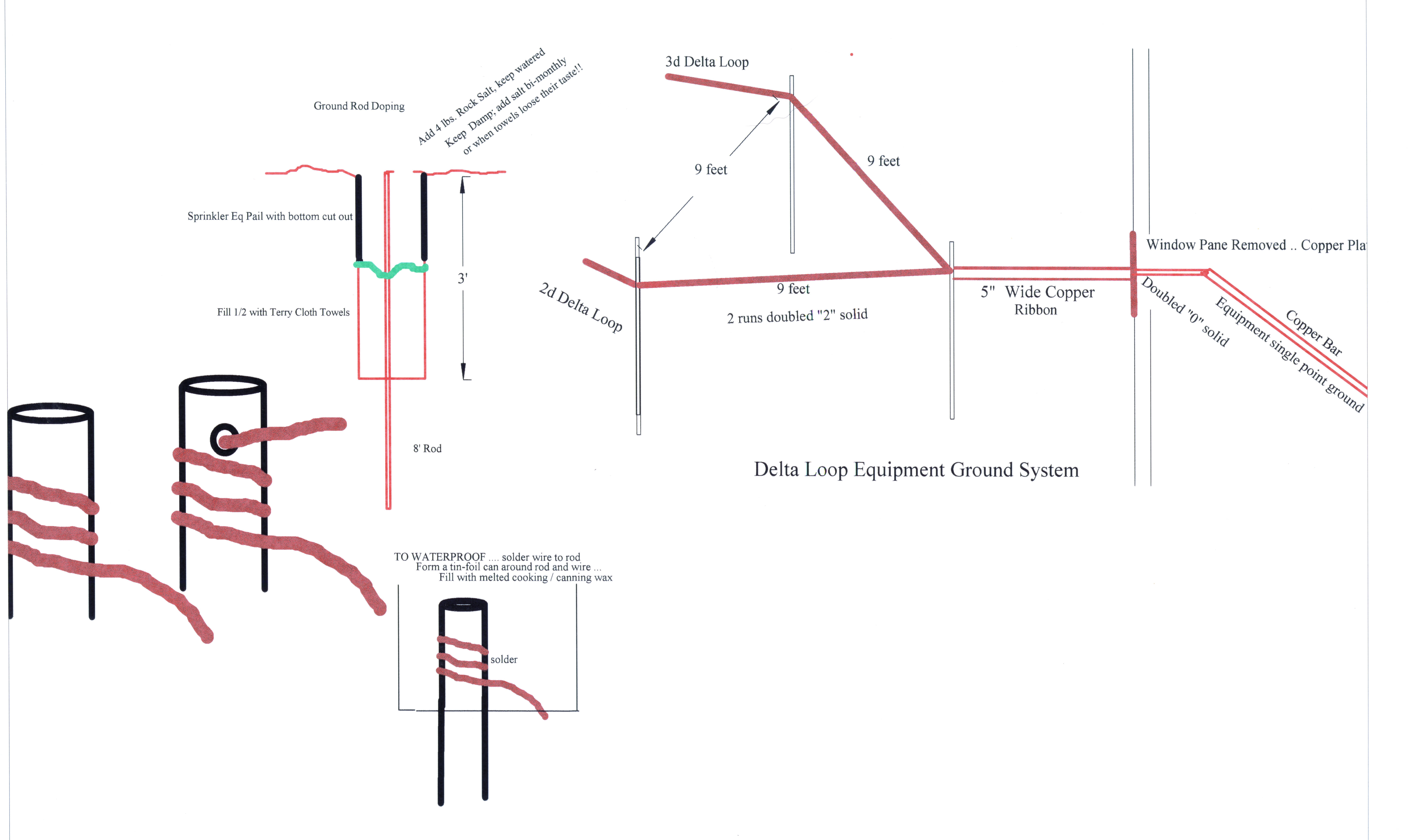
Wayne Overbeck Calibrated VU Meter

Turn off the receivers AGC, and look at the incoming signals audio intensity, great for testing and checking antenna performance against beacons and continuous carriers. Look up "measuring Antennae gain", Oct. 1977 -QST, via Wayne Overbeck!! It's good down to 1/2 dB. Fun to plot /antenna/VU Strength/MUF, its neat to see the high antenna disappear and the low ones come into play!!!! Also plot your spray versus signal ... its a Fun-Fun- Toy!!!!
................................................................................
DX Engineering Receive Antenna Phasing
 ...
...

Two Pre-Amp'd 102" wips, spaced 1/4 wavelength on 40 meters, pointed into Europe. Spacing will also work well on 20 and 80 meters. Careful adjustment of the ant and internal NCC2 Preamp's and the Attentuators together with adjustment of the ant balance and phasing will get you excellent rejection/nulling of band and interference noise.
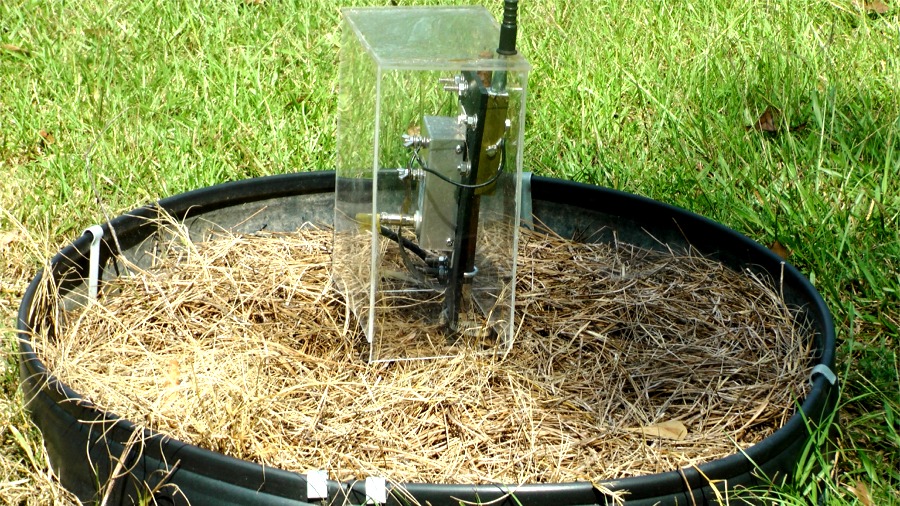
Ham Shack Computers

Work Bench
................................................................................................................................ ..........................................................
RF Space SDR-IQ Receiver
Full Screen Graph from a SDR-IQ of a 20 meter signal from a TS-590 Transceiver,

USB platform ... Runs with the RF-Space Software, a lot of "Bang For The Buck", in a $399.00 SRD receiver ... I use it to monitor my output TX signal, and band activity other that the frequency/band I'm on at present ..... You buy the assembled board and have to build your own enclosure.
Work Bench

Computer Driven Virtual Digital Audio

Virtual Audio
Digital
Audio Virtual Lash Up ….
Microphone ….
Feeds
Microphone.. Preamplifier RME. Babyface
Feeds
Analog into channel one of Yamaha O1V 96i Digital/Analog Mixer
Analog Output of O1V
Feeds analog, line input of
Sound card … M Audio Audiophile 192, internal computer
Or back feeds to the RME Babyface
Feeds
USB 3 Digital signal to BUS
Feeds
Second sound card .. UAD-2 SOLO (Dual DSP Audio Card)
Feeds
Digital Audio Workstation .... Cubase 7
Accepts Powered Plugins /VST plugins
Routes back to UAD and 192 sound cards D/A conversion
Feeds
O1V channel 2
Feeds Analog Line to Jensen Transformer (drops line to Mike level)
Feeds Transceiver.
Notes..
-Microphone representative should be a: Tube Type, Condenser, Ribbon, and
Dynamic.
-UAD powered plugs have their own PS thus present a low load on Computer
-For audio you may use va USB linkage, Firewire, Bus because they do not rely
on the computer for housekeeping purposes.
- Standalone USB Box’s with an internal PS are fine, price range varies
from $200. to $800, buy the best you can afford.
If you can use
a “Hot Shot” computer setup or one you know is fast with at least
8GB of memory.
A Super machine would be something like…
Core Intel in the I7 .. 39XX range
P4 or Z87 MB
SSD’s..three ..OS solo on 150 GB SSD, DAW on 950GB SSD, Plugins on a
third 950GB SSD.
79XX Graphics card
32GB.. DDR3 1860
USB-3
Water Cooler …
Audiophile M-192 and UAD Solo2 audio cards, also Moto Apollo as backup.
Full Tower with seven 7 inch variable fans.
Incoming AC is relative, Central point Grounding is essential, plus AC 1:1
Transformer feeding a variable voltage regulator, and commercial ISO with
cleaners….last but not least a good commercial UPS. Cause if you get
a brown out in the middle of a scene, your screwed..(pardon the vernacular)
DAW
There are many but most offer free trials, both on the platforms and VST software, get setup and play, it’s not every day you can run a complete console of Rupert Neves 1073 box’s, which today has a street price of over 20K, but you can have the whole virtual package for almost nothing and can set yous self up with 20K of vintage 1970ies equipment for a few hundred dollars.
Virtual Scenes from my Virtual Digital Station
Multi Band/Split Band Compression

UAD's Voice of God setup

Vintage API setup from thye 1970ies, for the British Invasion Sound

TriEx LM-70 Tower Installation
Home Brew LM-70 Mount
... 1.5 inch hardened rolled SS steel legs ..... with SS steel box perf cross rods ... note: beaded epoxy over leg welds.(used as a crack indicator)..
Mount --Overkill'd with 10.5 Square Yards of hardened high tensile concrete
Prep'd Mount

Tiltover Frame in place...Note: The re-enforcement of the front leg

Tower on Tiltover mount
.....................................................................................
Two 8 foot rods, bound with a 14" block of copper
Copper Plate Pass Through.... Attached to the Ground Rods, 8" copper strap attached to the system
Tower Ground Attachment with SS buffer
16 foot copper 4 inch ribbon run to Ground Rod Canisters
(Four lines out 16 feet then a second set of four 16 footers that ties into a 180 foot radial field)
Open Bottom canister with Ground Road and copper strap attachment
Gypsum Slurry for Ground Rod Doping
Adding Rock Salt
....................................................................................................................................................................................................................
Control Box's
........................................................................................................................................................................................................................
Control Wires..coax-rotor wire-band switching wire, inserted in Stretch Braid Shield
for a no tangle approach...the three wires are taped together with no twists, then threaded into the flex braid.
Now the "Trick".. you walk the shield and put the "Chinese Grip" on it..at the top end you go a foot pass your attachment point...slide the Cable Grip on ....now slide a 12 inch piece of HHD shrink tubing under the cable grip..
At the top of the tower a oversized "Cable Grip" grabs the shield with a 8 inch grip
This Braid Version or an adapation of such should lessen the stress placed on the vertical cables...
Wires fall into a neat loop/coil as the tower is retracted
.................................................................................................................................................
Lubing the Pull Cables of the tower
Wrap and tie a sponge with a drip cup to the cable. Put the tower in motion, keep the sponge wet with a generous amount of lube ....Run the tower up and down twice.......When the cup gets half full put on a new cup .... useing the filled cup now pour the lube onto the sponge. Do it once every quarter...Almost ZERO waste....and you can really soak the cable...
Beefing Up The Tilt OverWinch
The little Fulton K1550 really put a strain on the arm when tilting over the tower to it's horizontal rest. Life was much safer and easier by going to a 50:1 Fulton WS-3000 .... The lift rating was better ... you could turn the crank with one finger ...was very easy to couple a drill to the crank key, or was easy to hook up a a simple motor and a couple of pullies and belt....also because of the increased size of the drum, I was able to double up on the diameter of the cable.
................
.....